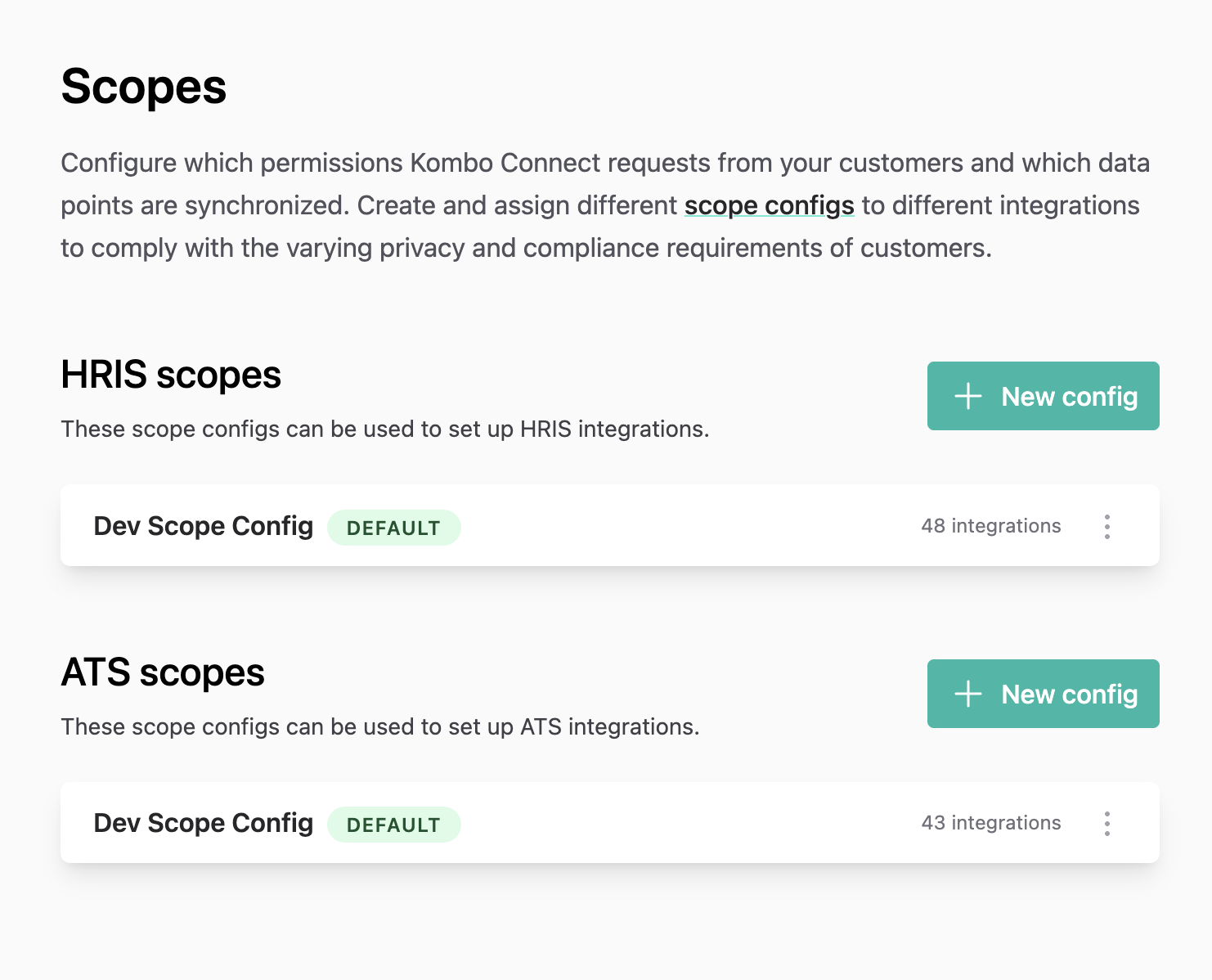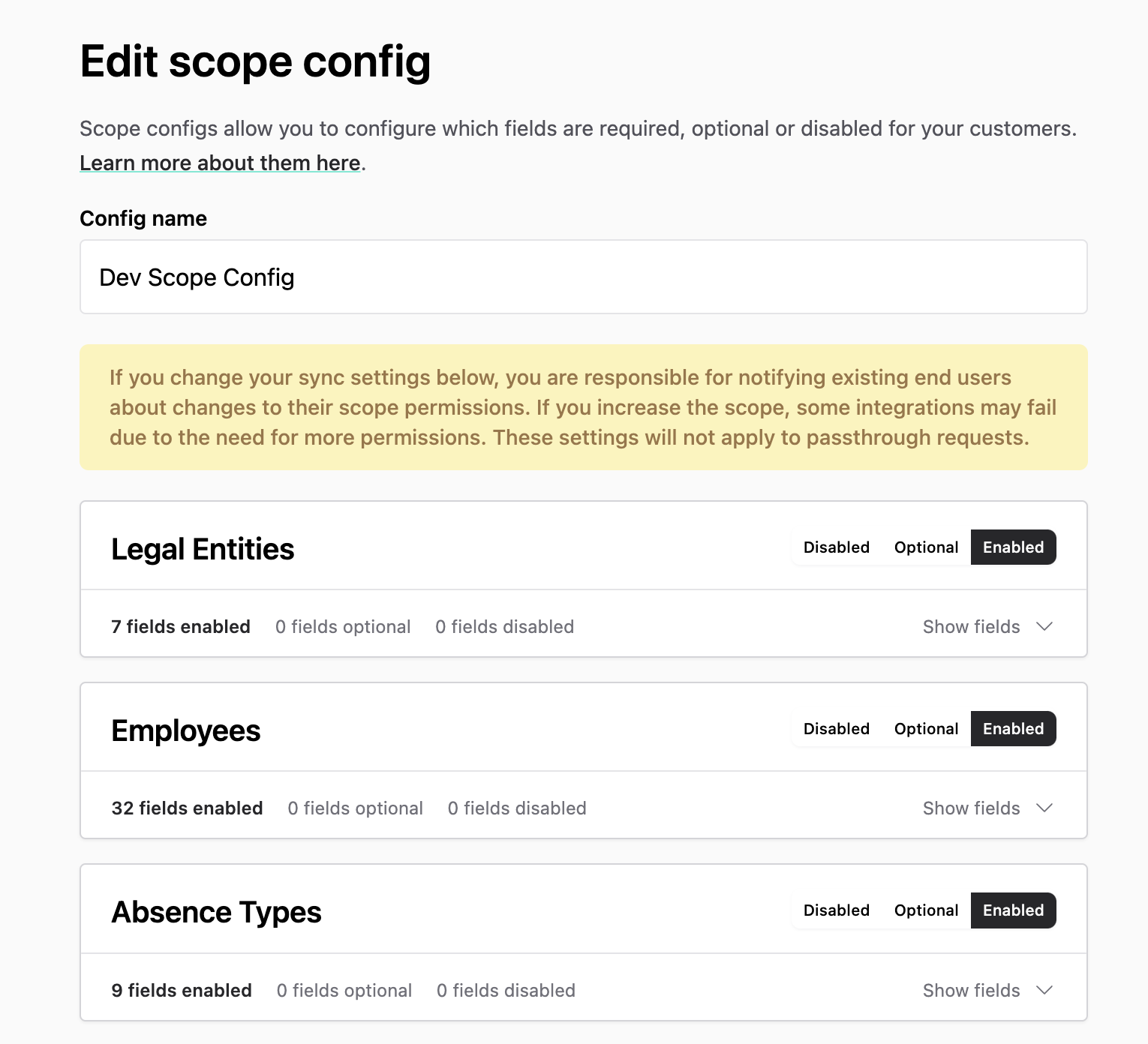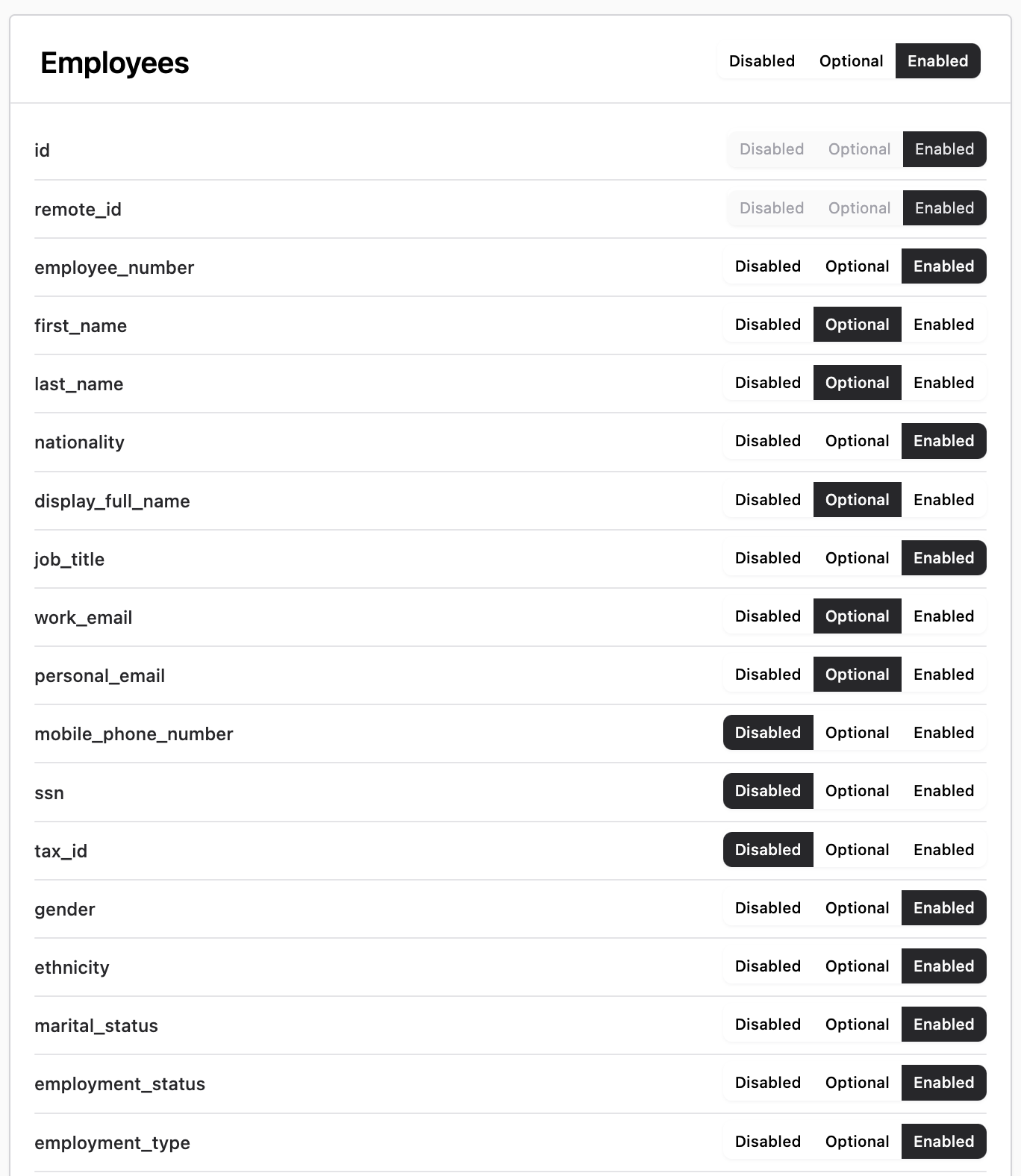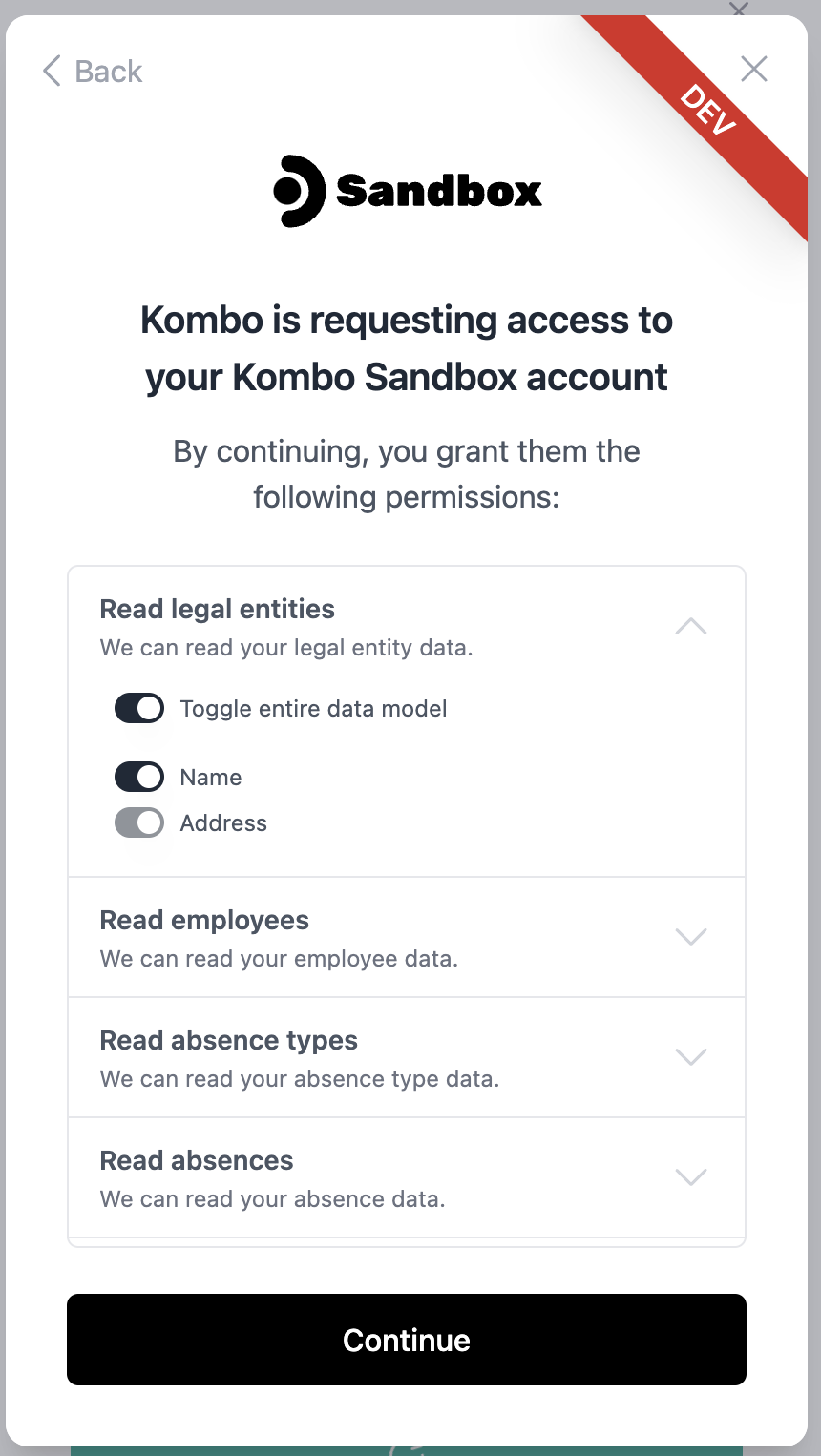Skip to main contentBy default, Kombo syncs all available data from connected systems. This can be
pretty convenient for exploring what’s available during development, but as soon
as you take Kombo into production, you’ll likely want to restrict what data is
extracted and stored for privacy and security reasons.
For this purpose, Kombo provides what we call “Scopes.” These allow you to
configure precisely which models and data points are being extracted and stored.
Scopes can, for example, be used to anonymize data by removing all personal
identifiable information from the data we store.
Configuring scopes
To get started configuring scopes, log into the
Kombo Dashboard and open the “Scope Config” page. It
should look something like this:
When editing your scope configs or creating a new one, a page similar to this
one will open:
All of Kombo’s Data Models are listed here, and you can disable, enable or
mark an entire Data Model as optional.
We do not sync data from disabled data models. Optional Data Models aren’t
synced if your customer opts out of having the field exposed. Enabled
models are always synced.
We recommend turning all Data Models off that you are not interested in. For example,
if you want to sync employee, employment and organization data
but are not interested in absences, turning off the absence type, absences and
time off balance Data Models is recommended. This will simplify the setup for your customer, improve sync times, and
not expose any data that does not need to be exposed.
Configuring fields
If you only want to turn off individual model fields, you can expand
each model in the edit page. You will now see all the fields it supports:
For example, if you don’t want to sync sensitive data like SSNs or Tax IDs,
you can turn them off here. Similarly, if you would like to read
personal identifiable information but it is not required for your use-case,
consider marking the field as optional. This will give your customers the choice
of whether they want to expose it or not.
Building trust with your customers
Some of the systems we help you integrate contain very sensitive data (like
personal addresses or tax IDs of employees). That’s why
communicating which data points you access and which you don’t is critical to
building trust and eradicating concerns during the sales process.
To help you with this, we’re exposing your scope config to the end user as part
of our connection flow:
This way, your customers can see exactly which data points you’re accessing. 


